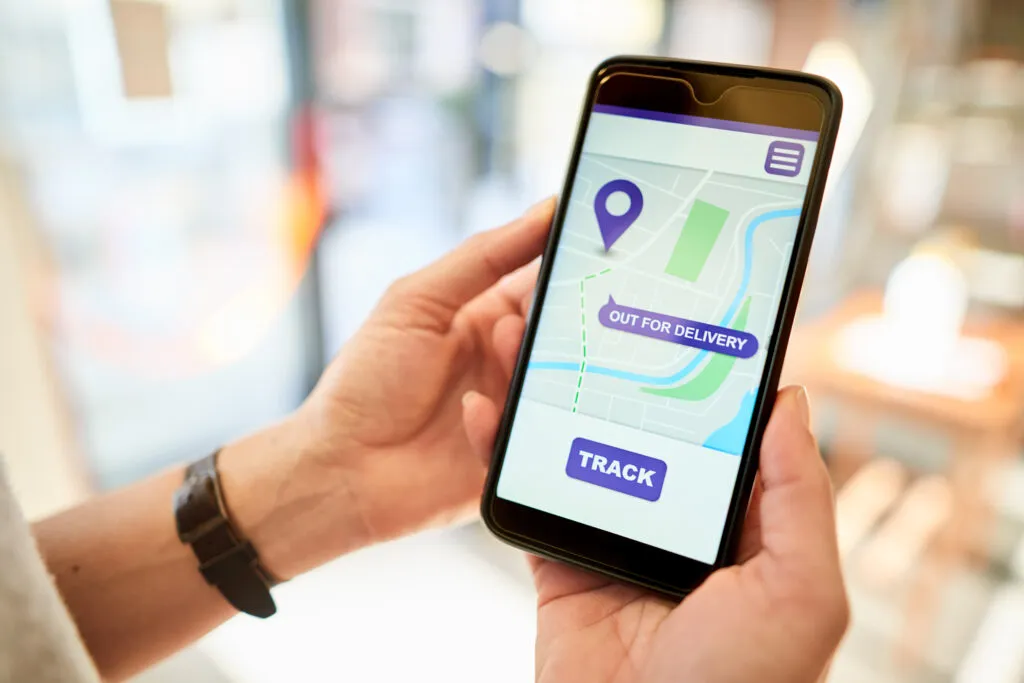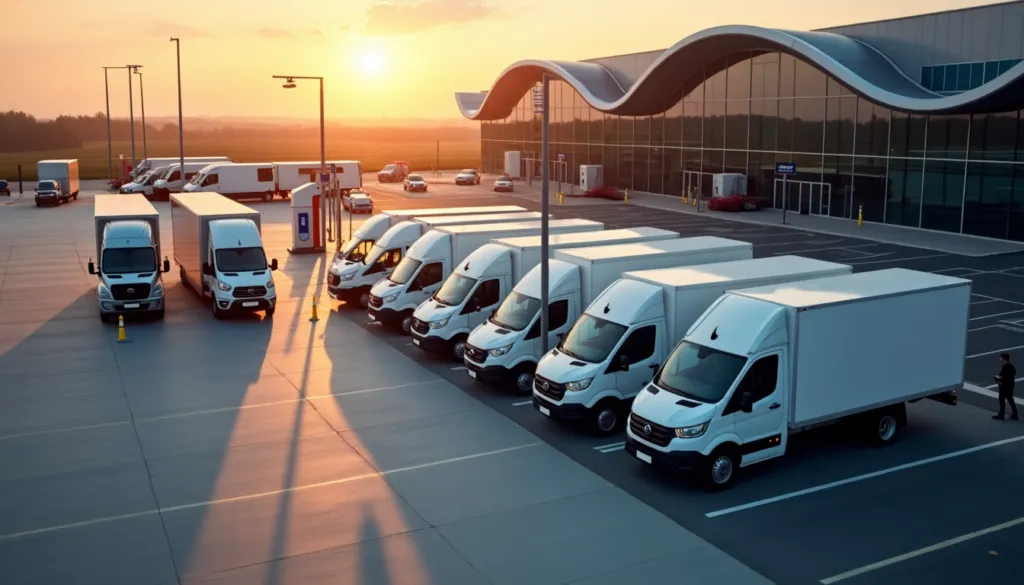
Get home early with RoadWarrior.
Enter your stops, optimize your routes, manage your team – quickly and efficiently.
Try RoadWarrior free for 7 days
Try free for 7 daysLast mile delivery has become a critical component of the logistics process. With consumers expecting fast and free shipping, companies are under immense pressure to optimize their last mile delivery operations to remain competitive. In this comprehensive guide, we will explore the concept of last mile delivery, delve into its challenges, discuss technological solutions, and highlight the trends that are shaping its future.
Table of Contents
- What is Last Mile Delivery?
- Understanding the Last Mile Delivery Process
- The Last Mile Delivery Problem
- Challenges in Last Mile Deliveries
- Technological Solutions for Last Mile Delivery
- Introducing RoadWarrior: Optimizing Last Mile Deliveries
- Route Planning to Cut Delivery Times
- Reducing Service Time and Labor Costs with Auto Dispatching
- Providing Proof of Delivery for Transparency
- Increasing Accountability with Reporting
- Enhancing the Customer Experience
- Trends Shaping Last Mile Delivery in 2023
- Conclusion
What is Last Mile Delivery?
Last mile delivery refers to the final leg of the delivery process, where goods are transported from a transportation hub to their ultimate destination, usually a personal residence or retail store. It is a critical step in the delivery process, often involving the movement of packages in urban or suburban areas. The goal of last mile delivery is to ensure quick and efficient delivery to meet the increasing consumer demand for fast shipping, particularly in e-commerce, food, and retail industries.
Understanding the Last Mile Delivery Process
The last mile delivery process can be divided into five key steps:
- Orders are digitally entered into a centralized system: This step involves the digital entry of orders into a centralized system, allowing both the sender and recipient to track the status of the delivery through a tracking number.
- Orders arrive at the transportation hub: Once the orders reach the transportation hub, they await delivery to their end recipients. It is crucial for businesses to ensure the prompt transfer of orders from the hub to the customer.
- Orders are designated to delivery personnel: Parcels are strategically sorted and assigned to delivery personnel based on routes and recipient addresses. Effective sorting and designation of parcels are vital for optimizing the delivery process and minimizing costs.
- Orders are scanned before being loaded onto delivery vehicles: Before loading the orders onto delivery vehicles, they are scanned to update the status for the sender and the recipient. This step reduces the risk of lost goods during transit.
- Orders successfully reach the end recipients: Finally, the orders reach their final destination, and proof of delivery is obtained. The delivery personnel update the tracking information to confirm the completion of the delivery.
The Last Mile Delivery Problem
While customers expect free and fast shipping, last mile delivery happens to be the most expensive and time-consuming part of the shipping process. This creates a significant challenge for companies as they strive to meet customer expectations while managing costs. Last mile shipping can account for up to 53% of a shipment’s total costs, with companies bearing approximately 25% of this cost. As supply chain inefficiencies continue to rise, this percentage is expected to increase.
Challenges in Last Mile Deliveries
Optimizing last mile delivery is crucial for businesses, as it can result in significant savings and improved customer satisfaction. However, several challenges exist in the last mile delivery process. Let’s explore some of the key challenges:
- Delivery Time and Efficiency: With the growing demand for fast shipping, businesses face the challenge of delivering orders within tight timeframes. Efficient route planning and optimized delivery processes are necessary to meet these expectations.
- Traffic and Congestion: Urban areas often experience heavy traffic and congestion, making it difficult for delivery personnel to navigate and complete deliveries efficiently. Traffic patterns and congested areas need to be taken into account when planning delivery routes.
- Delivery Tracking and Transparency: Customers value transparency and the ability to track their deliveries in real-time. Ensuring accurate and up-to-date tracking information can be a challenge, especially when multiple parties are involved in the delivery process.
- Managing Returns and Reverse Logistics: Dealing with returns and managing reverse logistics can be complex and time-consuming. Businesses need efficient processes in place to handle returns smoothly and minimize disruptions to the last mile delivery operation.
- Rising Costs: Last mile delivery can be costly due to factors such as fuel expenses, labor costs, and vehicle maintenance. Companies must find ways to optimize their operations and reduce costs without compromising on service quality.
Technological Solutions for Last Mile Delivery
Technology plays a crucial role in tackling the challenges of last mile delivery. Here are five ways technology can solve the biggest challenges in last mile deliveries:
- Use Route Planning to Cut Delivery Times: Advanced route planning software, such as RoadWarrior, can optimize delivery routes by considering factors such as time, location, vehicle capacity, and traffic. Real-time updates on traffic conditions can be sent to the delivery driver, enabling them to choose the most efficient routes.
- Reduce Service Time and Labor Costs with Auto Dispatching: Auto dispatching features automate the assignment of tasks to drivers, taking into account their location and route distance. This reduces the time and effort required for manual route planning and helps optimize resource allocation.
- Provide Proof of Delivery for Transparency: Mobile apps with features like photo collection, signatures, barcodes, and notes enable drivers to provide proof of delivery easily. This enhances transparency and builds trust with customers by providing documentation that verifies the delivery of their packages.
- Increase Accountability with Reporting: Analytics tools offer insights into key metrics such as success rates, on-time rates, service times, feedback scores, and distance traveled. By monitoring these metrics, businesses can identify bottlenecks, track performance, and make data-driven decisions to improve their last mile delivery operations.
Introducing RoadWarrior: Optimizing Last Mile Deliveries
When it comes to optimizing last mile deliveries, one powerful tool is RoadWarrior. RoadWarrior is a comprehensive last mile delivery platform designed to streamline operations, enhance efficiency, and improve customer satisfaction. Trusted by businesses across various industries, RoadWarrior offers a complete toolkit for last mile delivery.
With RoadWarrior, businesses can benefit from the following features:
- Efficient Route Planning: RoadWarrior’s advanced route optimization algorithms consider various factors to recommend the most efficient routes, taking into account time, location, and real-time traffic updates.
- Auto Dispatching: The auto dispatching feature automates the assignment of tasks to drivers, optimizing resource allocation and reducing the need for manual route planning. Managers can set rules based on driver location and route distance, ensuring efficient task distribution.
- Proof of Delivery: RoadWarrior’s mobile app enables drivers to provide proof of delivery easily. The app supports photo collection, signatures, barcode scanning, and note-taking, ensuring transparency and documentation throughout the delivery process.
- Reporting and Analytics: RoadWarrior’s comprehensive reporting and analytics tools provide valuable insights into key metrics, enabling businesses to track performance, identify areas for improvement, and make data-driven decisions.
By leveraging RoadWarrior, businesses can optimize their last mile delivery operations, reduce costs, improve efficiency, and ultimately enhance customer satisfaction.
Route Planning to Cut Delivery Times
Efficient route planning is crucial for reducing delivery times and improving overall last mile delivery efficiency. With the help of advanced route optimization software, businesses can streamline their delivery routes, minimize travel distances, and maximize the number of deliveries per trip. This not only saves time but also reduces fuel costs and vehicle wear and tear.
RoadWarrior’s route planning feature utilizes advanced algorithms to consider multiple factors such as distance, traffic conditions, delivery time windows, and vehicle capacity. By factoring in these variables, RoadWarrior recommends the most efficient routes, ensuring that drivers can complete their deliveries in the shortest possible time.
Real-time updates on traffic conditions can be sent to drivers via SMS, allowing them to make informed decisions and adjust their routes accordingly. By implementing route planning solutions like RoadWarrior, businesses can significantly cut down delivery times, improve productivity, and meet customer expectations for fast and efficient service.
Reducing Service Time and Labor Costs with Auto Dispatching
Manual route planning and task assignment can be time-consuming and labor-intensive. Auto dispatching, a feature offered by RoadWarrior, automates the assignment of tasks to drivers based on their location and the distance of the delivery routes. This eliminates the need for manual intervention and reduces the time and effort spent on route planning.
Managers can set auto-assignment rules in RoadWarrior based on various criteria, such as driver availability, proximity to delivery locations, and the number of tasks assigned per driver. By optimizing resource allocation and reducing the number of drivers required for a day’s deliveries, businesses can minimize labor costs and maximize operational efficiency.
Auto dispatching also ensures fair task distribution among drivers, preventing any potential imbalances in workload. With RoadWarrior’s auto dispatching feature, businesses can streamline their last mile delivery operations, save time, and allocate resources more effectively.
Providing Proof of Delivery for Transparency
Transparency is a key factor in building trust and credibility with customers. Providing proof of delivery (POD) is essential to ensure transparency in the last mile delivery process. RoadWarrior’s mobile app allows drivers to capture proof of delivery through various means, including taking photos and collecting signatures.
By using the mobile app, drivers can document the delivery process in real-time, providing tangible evidence that the packages have reached their intended recipients. This documentation can include photos of the delivered packages, signatures of the recipients, and timestamps indicating the date and time of delivery. Such proof of delivery not only assures customers of the successful completion of their orders but also helps resolve any disputes or issues that may arise.
RoadWarrior’s comprehensive proof of delivery features enable businesses to maintain transparency, enhance customer satisfaction, and build a reputation for reliable and accountable last mile delivery services.
Increasing Accountability with Reporting
Monitoring and analyzing key performance indicators (KPIs) is crucial for identifying bottlenecks, tracking performance, and making informed decisions to optimize last mile delivery operations. RoadWarrior’s reporting and analytics tools provide businesses with valuable insights into various metrics, allowing them to measure and evaluate their performance effectively.
With RoadWarrior, businesses can monitor KPIs such as success rates, on-time rates, service times, feedback scores, and distance traveled. These metrics can be filtered by teams, drivers, day, week, or even by the hour of the day. By exporting this data and generating custom reports, businesses can gain a holistic view of their last mile delivery supply chain and identify areas for improvement.
Analyzing KPIs through RoadWarrior’s reporting and analytics dashboard empowers businesses to make data-driven decisions, optimize their operations, and enhance overall accountability in the last mile delivery process.
Trends Shaping Last Mile Delivery in 2024
As the last mile delivery landscape continues to evolve, several trends are shaping the future of the industry. Here are seven trends that companies are actively testing and executing to perfect the last mile delivery process and meet evolving consumer demands:
- Rapid Order Fulfillment: Consumers increasingly expect on-demand or same-day delivery. Businesses need to turn orders around quickly, often within minutes, to meet these expectations.
- Improved Traceability: Package traceability has become essential, with features like proof of delivery and real-time tracking. Customers want to know the exact location of their packages and receive updates throughout the delivery process.
- In-House Delivery Services: More companies are establishing their own in-house delivery services, allowing them to have greater control over costs, customer experience, and delivery windows.
- Micro Warehousing: Companies are allocating or purchasing additional warehouse space dedicated to fast deliveries. Micro warehousing enables faster order processing and fulfillment, reducing delivery times.
- Carrier Upsells: Last mile delivery carriers are exploring the opportunity to upsell products at the point of delivery. By analyzing customer purchase history, carriers can offer complementary products or services, increasing revenue opportunities.
- Smart Technology: With the increasing variety of products ordered online, technology is playing a crucial role in ensuring the safe and efficient delivery of specific goods. Fulfillment centers are implementing measures to control temperature, humidity levels, air quality, and more.
- Robots and Drones: Autonomous vehicles and drones have the potential to revolutionize last mile delivery. By reducing labor costs and enabling 24/7 delivery, these technologies offer the possibility of more efficient and cost-effective operations.
Conclusion
In the dynamic world of e-commerce and online shopping, last mile delivery is a critical aspect of the logistics process. To meet the demands for fast and efficient shipping, businesses must optimize their last mile delivery operations. By leveraging technological solutions like RoadWarrior, businesses can streamline their route planning, reduce service time and labor costs, enhance transparency, improve the customer experience, and stay ahead of industry trends. With the right tools and strategies in place, companies can achieve operational excellence in last mile delivery and drive customer satisfaction. Embrace the power of technology, and revolutionize your last mile delivery operations today!


